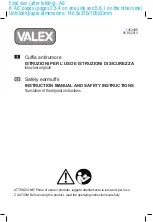
SecoGear Medium-voltage Switchgear Application and Technical Guide
DET-882
SecoGear Switchgear Applications
44
©2017 General Electric All Rights Reserved
Figure 5-4: Dual-Source Incoming Line
BUS TIES (BT)
A bus tie is metal-clad equipment connecting two power
distributions buses through a tie breaker. Such equipment is
sometimes specified without overcurrent relays because of
the difficulty of obtaining selective system operation when
using bus-tie overcurrent relays.
Basic Equipment Selection
Basic bus-tie circuit breaker and auxiliary bus are located in
the bottom compartment of each of two vertical sections.
The top compartment of either or both vertical sections can
be used as either an auxiliary compartment or a feeder
compartment. See Figure 5-5 for arrangement restrictions
when selecting bus tie equipment. The basic equipment
included in a bus tie is a circuit breaker control switch and
indicating lights.
Optional Equipment Selection
Protection
•
Overcurrent Protection: For systems requiring
overcurrent protection relays for bus-tie equipment,
specify incoming line overcurrent relay(s) (50/51) to be
wired for a summation current connection. If residually
connected ground-over-current relays (51N) are required
with an incoming line, the equipment may be wired also
for a summation current connection. Include a second set
of three current transformers if your system has a
second incoming line.
•
Bus-Differential Protection: For systems requiring bus-
differential protection, relays can be mounted in bus-tie
vertical sections. Each set of bus-differential protection
includes three-phase high-speed bus-differential relays
(87B) such as GE Multilin B30 or B90, one Type GE Series
95 hand-reset lockout relay (86B), and three current
transformers. If the bus-differential relays have been
included in the incoming line (SSIL or DSIL) package, then
additional relays are not required.
















































